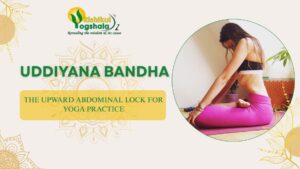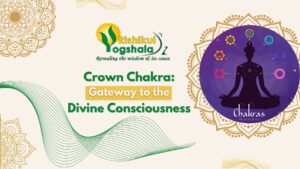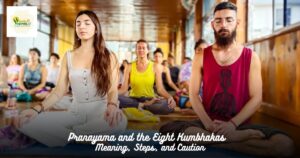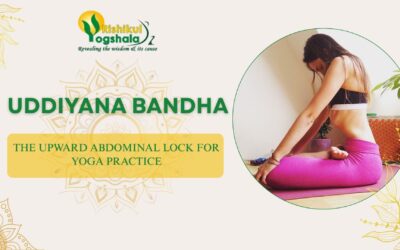Introduction
In a peaceful environment surrounded by high mountains and the waters of the sacred River Ganges, Rishikul Yogashala, our renowned yoga school in Rishikesh, invites you to make a life-changing beginning to yoga. Among the many yoga asanas taught during our 200-hour and 300 Hour Yoga TTC in Rishikesh, Baddha Konasana stands out as a powerful and accessible asana. In this article, we will learn about this yoga pose, and its benefits, and why this pose is essential in yoga practice.
What is Baddha Konasana?
Baddha Konasana, often known as the Cobbler’s Pose or Bound Angle Pose, is a seated yoga posture that improves your body’s overall flexibility. The posture of this Yoga asana resembles the sitting stance of a working cobbler; hence, it is called Cobbler’s Pose. The Sanskrit words “Baddha Konasana” can be broken down as “Baddha”, meaning bound or tied, “Kona”, meaning angle, and “Asana” meaning posture. This yoga pose is known for opening up the hips and groin area, strengthening the inner thighs and pelvic floor muscles, and providing many other physical and mental benefits.
It is a simple pose that can be performed easily by both advanced yogis and beginners. Baddha Konasana benefits for males include improved hip flexibility, enhanced circulation, and relief from lower back pain, making it an excellent pose for overall physical health.

Baddha Konasana Benefits
Lets discucss benefits of baddha konasana in detail:
- Flexibility of Hip and Groin area: One of the primary benefits of this yoga pose is its profound impact on hip and groin flexibility. Regular practice can reduce tension in these areas and improve overall mobility.
- Stimulates Abdominal Organs: This yoga pose also stimulates the abdominal organs, aiding digestion and relieving mild digestive discomfort.
- Relieves Lower Back Pain: Regular practice of Bound Angle Pose can help reduce lower back pain by stretching and strengthening the lower back muscles.
- Increases blood circulation: This pose also improves circulation throughout the pelvic area, promoting overall reproductive health.
- Balances the nervous system: This yoga pose helps balance the parasympathetic and sympathetic nervous systems, reducing anxiety and promoting relaxation.
- Calms the Mind: The focused, meditative quality of Bound Angle Pose can calm the mind, reduce stress, and improve mental clarity.
- Helps in hormonal balance: It improves hormonal balance by increasing blood flow to the pelvic area, helping in conditions like menstrual disorders, menopause, and infertility-related problems.
Precautions and Tips to Practice Baddha Konasana
This yoga asna offers many benefits, it is essential to do it cautiously, especially if you have certain medical conditions or injuries. Here are some precautions and tips to keep in mind:
- If you have a back, groin or knee injury, consult a yoga instructor or healthcare professional before attempting this pose.
- Avoid pressing your knees down to the floor. Practicing this yoga pose over time will help you improve your flexibility.
- Use props like yoga blocks or cushions under your knees for extra support.
- Keep your spine straight and avoid rounding your back and shoulders.
Variations to Baddha Konasana
Supta Baddha Konasana
“Supta Baddha Konasana”, also known as Reclining Goddess Pose, is a variation of this yoga pose. In this pose, you lie on your back with the soles of your feet touching each other and your knees open to the sides, keeping the legs in the same position as in Baddha Konasana. Supta Baddha Konasana relaxes your body, strengthens your inner thighs, and gently stretches your hips and groin.
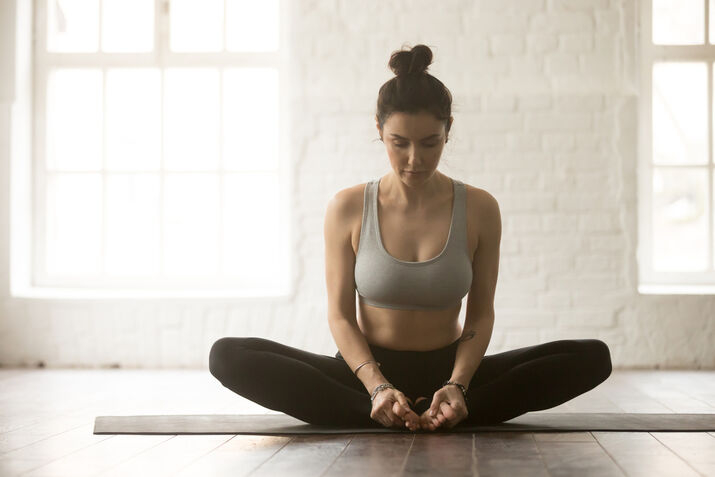
Bound Angle Forward Bend
“Bound Angle Forward Bend” is a variation of this pose where you sit with the soles of your feet together, knees out to the side, and gently bend forward from your hips while keeping your back straight. This pose can be done using a folded blanket under the thighs for better comfort and alignment.
Also Read – The Butterfly Effect: How Baddhakonasana Transforms Your Physical, Psychic, and Emotional Health
Conclusion
Incorporating this pose into your practice can lead to significant improvements in overall well-being. Those interested in deepening their yoga journey should consider enrolling in a yoga teacher training program. Rishikul Yogshala, a leading Yoga school in Rishikesh, offers comprehensive courses like the 200 Hrs Yoga TTC In Rishikesh, 300 Hour Yoga Teacher Training In India, and 500 Hour Yoga Teacher Training India. These programs are designed to help you master your practice and share the transformative power of yoga with others.





